Called by Brigham Young Name Heber Kimball | ||
 | ||
Reason Initial organization of Quorum of the Twelve Children Andrew Kimball, David Patten Kimball Books Heber C. Kimball's Journal: Faith-Promoting Series Similar People Wilford Woodruff, Spencer W Kimball, John Taylor, Willard Richards, George A Smith | ||
Reorganizationat end of term No apostles ordained | ||
Mormon mission heber c kimball brigham young
Heber Chase Kimball (June 14, 1801 – June 22, 1868) was a leader in the early Latter Day Saint movement. He served as one of the original twelve apostles in the early Church of the Latter Day Saints, and as first counselor to Brigham Young in the First Presidency of The Church of Jesus Christ of Latter-day Saints (LDS Church) for more than two decades, from 1847 until his death.
Contents
- Mormon mission heber c kimball brigham young
- Mission of Heber C Kimball Brigham Young
- Early life
- Education and training
- Masonry
- Early family life
- Signs in the heavens
- Joining the Latter Day Saint movement
- Church service
- Quorum of the Twelve
- First Presidency
- Government service
- Death
- Family
- Wives and children
- Descendants
- References
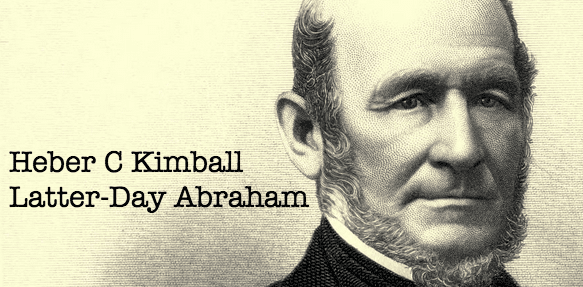
Agreeing to take on plural marriage, then part of church doctrine, Kimball eventually married forty-three women, but some relationships were for caretaking. He had a total of sixty-six children by seventeen of his wives.
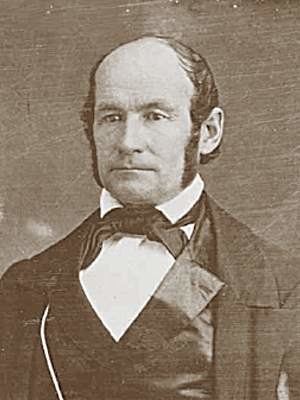
Mission of Heber C. Kimball & Brigham Young
Early life

Heber Chase Kimball was born in Sheldon, Franklin County, Vermont in 1801. He was a descendant of the Kimball immigrants to Massachusetts from England in 1634. He was named after a judge Heber Chase, who had helped the family in their efforts to settle in the area. Due to the embargo on trade with Britain preceding the War of 1812, his father lost his investments and the family moved into western New York. They settled in West Bloomfield, New York, Ontario County, around 1811.
Education and training
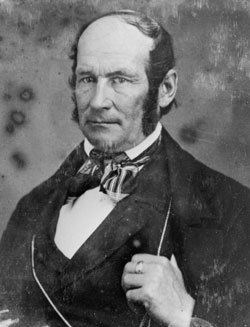
Kimball left school at age 14, trained as a blacksmith and potter, and moved with his brother about 1820 to Mendon, Monroe County, New York. There he married his first wife, Vilate Murray, in 1822.

After purchasing his brother's pottery business, for the next 10 years, he carried out his trades. He acquired five and a half acres (22,000 m²) of land, built a house and a barn, and planted an orchard.
Masonry
In 1823, Kimball received the three first degrees of Freemasonry in the lodge at Victor Flats, Ontario County, New York. In 1824, he sent a petition to the chapter at Canandaigua, New York, to receive the York Rite degrees of Royal Arch Masonry. His petition was accepted, although, as he reported, Anti-Masons had burned down the chapter building in Canandaigua. Many years later, Kimball reminisced of his New York masonic experiences and stated: "I wish that all men were masons and would live up to their profession, then the world would be in a much better state than it is now."
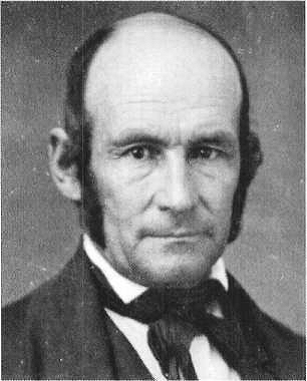
When the Church of Jesus Christ of Latter Day Saints established itself in Nauvoo, Illinois, Kimball was one of the original petitioners to establish a Freemasonry lodge there. He served as Nauvoo Lodge U.D.'s first Junior Deacon. He remained active in Freemasonry throughout his stay in Nauvoo, but was not active once he moved to Utah Territory. There was no lodge in Utah in his lifetime that would admit Mormons.
Early family life
Several of Kimball's close family members died of tuberculosis within a few years: his mother in February 1824, his father in the spring of 1826, followed by his brother Charles C. and his brother's wife shortly thereafter.
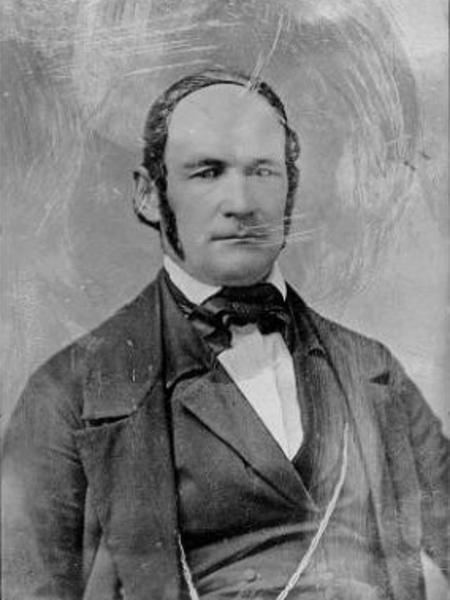
His son William Henry was born in Mendon, April 10, 1826; he was Kimball's first child to survive infancy. His daughter Helen Mar was born August 22, 1828. She was the only daughter to survive.
Signs in the heavens
Kimball claims to have witnessed a miraculous event on September 22, 1827. According to his autobiography, he subsequently learned that it "took place the same evening that Joseph Smith received the records of the Book of Mormon from the Angel Moroni." He had seen "a white smoke" arising on the horizon, growing "clear and transparent of a bluish cast" to reveal an army on the move "in platoons":
"We could see distinctly the muskets, bayonets, and knapsacks of the men, who wore caps and feathers like those used by the American soldiers in the last war with Britain; also their officers with their swords and equipage, and heard the clashing and jingling of their instruments of war and could discover the form and features of the men. The most profound order existed throughout the entire army, when the foremost man stepped, every man stepped at the same time: I could hear the step. When the front rank reached the Western horizon a battle ensued, as we could distinctly hear the report of the arms and the rush. No man could judge of my feelings when I beheld that army of men, as plainly as I ever saw armies of men in the flesh it seemed as though every hair of my head was alive. This scenery was gazed upon for hours, until it began to disappear."Joining the Latter Day Saint movement
While in New York, Kimball joined the local Baptist Church and was eventually baptized. Three weeks later, three elders from the Church of Christ, the original name of the Latter Day Saint church founded by Joseph Smith, visited the house of his friend, Phinehas Young. Kimball visited the house at this time and was impressed with church teachings. He also witnessed the speaking of tongues and the interpretation of tongues during this visit. He claims to have been visited by the power of God.
During this time, Kimball said that he and several of the Young family saw a vision opened of the "gathering of the Saints to Zion." He was inspired to travel to Pennsylvania where he could visit at length with the elders, and was accompanied by some of the Youngs. They stayed six days with the elders and witnessed more miracles, such as speaking in tongues and the interpretation of tongues.
On April 16, 1832 Kimball was baptized by Alpheus Gifford. After the confirmation, the elder offered to ordain Kimball to the priesthood, but Kimball refused it as he felt he was unready. Thirty more people were baptized in Mendon and formed a branch of the church there.
About this time, people began calling Kimball "crazy," although he claims he was "clothed in the right mind." He claims the scriptures unfolded for him. Local clergy and members of other faiths soon became antagonistic towards the small Latter-day Saint branch and its members. Kimball had several people make executions on his property to recall considerable debts, which he was nevertheless able to pay off in full.
Church service
Shortly after his baptism, Kimball was ordained an elder by Joseph Young. He began proselyting in the neighboring areas with Joseph and Brigham Young. This part of New York became known as the "burnt over district" because of the numerous religious sects that sprang up during the 19th century. The Youngs baptized many people and built up branches of the church. Kimball said that one day Ezra Landon baptized some 20 people but wanted him to confirm them. He did so, and immediately they began speaking in tongues and interpreting them.
In 1833, Kimball relocated his family to church headquarters in Kirtland, Ohio. He marched with Zion's Camp in 1834. From 1832 until 1840, Kimball served eight missions for the Church, requiring him to be apart from his family for months at a time.
Quorum of the Twelve
On February 14, 1835, Kimball was ordained a member of The Quorum of Twelve Apostles of the Church of the Latter Day Saints (renamed the Church of Jesus Christ of Latter Day Saints in 1838). He was one of the original twelve members of the Quorum, being 4th in seniority.
Joseph Smith called Kimball to lead a group of missionaries to England in 1837. The mission began work in Preston, Lancashire, England. After the initial baptisms in Preston, the missionaries expanded their efforts to the Ribble Valley. By the time Kimball departed for the United States in 1838, about 1,500 people had been baptized.
Kimball returned with a small party to make travel arrangements for the groups and discovered the Latter Day Saints were undergoing considerable strife and pressure in the state of Missouri.
While Smith was imprisoned in the Liberty Jail, Brigham Young (now ranking leader of the Quorum) and Kimball organized the removal of approximately 12,000 Latter Day Saint refugees across the border into Illinois. There the church founded the city of Nauvoo and built a temple.
In September 1839, Kimball left Nauvoo for another mission to England. He did not reach Indiana until October. He made stops at Kirtland to encourage the remaining Saints there to move to Nauvoo and other places and had a long layover in New York City. He sailed from New York on December 19, reaching Liverpool on April 6. Kimball spent 1840 and some of 1841 in England, initially in the area in and around Preston, and later working as a missionary in London. The missionaries began organizing groups of British converts to travel to the United States, beginning in 1840, and to join the main body of the church.
After Smith was killed in 1844, succession to the leadership of the church was a divisive issue. Young led the majority of church members across the state line into Iowa and eventually to the Salt Lake Valley. Kimball stood next in leadership in the Quorum to Young.
First Presidency
Kimball became a member of the new First Presidency in 1847. Kimball led one of three large companies to the Salt Lake Valley in the summer of 1848.
He established his families in Utah Territory (he had three wives) and supported them by farming, ranching, milling at the Heber C. Kimball Gristmill and freighting, in addition to church responsibilities.
While in the First Presidency, Kimball received special assignments to supervise the ongoing British Mission and to conduct temple ordinances. He also worked to encourage economic independence for Utah. He had one slave, Green Flake, who was given to the church for tithing, whom he used as his personal driver.
Government service
When the provisional government of the State of Deseret was organized in spring 1849, Kimball was appointed the chief justice and lieutenant governor of the proposed state.
Kimball served in the Utah Territorial Legislature in the upper house (the Territorial Council) from 1851 until 1858. He was president of the Council during the session beginning in March 1851, but later served as a regular member of the Council.
Death
One night at family prayers, Kimball said that "the angel Moroni had visited him the night before and informed him that his work on this earth was finished, and he would soon be taken.” Kimball died the following day on June 22, 1868, at age 67, in Salt Lake City, Utah Territory, from the effects of a carriage accident. He was buried in the Kimball-Whitney Cemetery (40.772949, -111.889755), located on the south slope of what's now known as Capitol Hill, an area then called "Heber's Bench" after him.
Family
Kimball received private instruction from Joseph Smith on plural marriage (polygamy). Initially reluctant, Kimball accepted the responsibility and married a second wife, Sarah Noon. His first wife, Vilate Murray Kimball, accepted plural marriage and welcomed the additional wives as sisters. Heber and Vilate agreed and gave their 14-year-old daughter Helen Marr as a plural wife of Joseph Smith. Kimball considered the marrying of multiple wives an expression of his faith in and obedience to God: "I have noticed that a man who has but one wife, and is inclined to that doctrine, soon begins to wither and dry up, while a man who goes into plurality [of wives] looks fresh, young, and sprightly. Why is this? Because God loves that man, and because he honors His work and word."
Wives and children
Kimball eventually married a total of forty-three women, although it is stated that many of these marriages were merely caretaking arrangements lacking physical intimacy. Kimball had sixty-six children by seventeen of his wives.
Descendants
Kimball has a number of noteworthy descendants, including:
